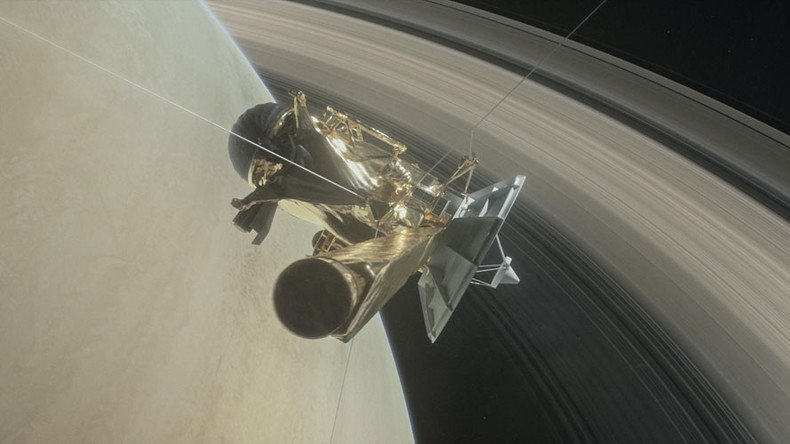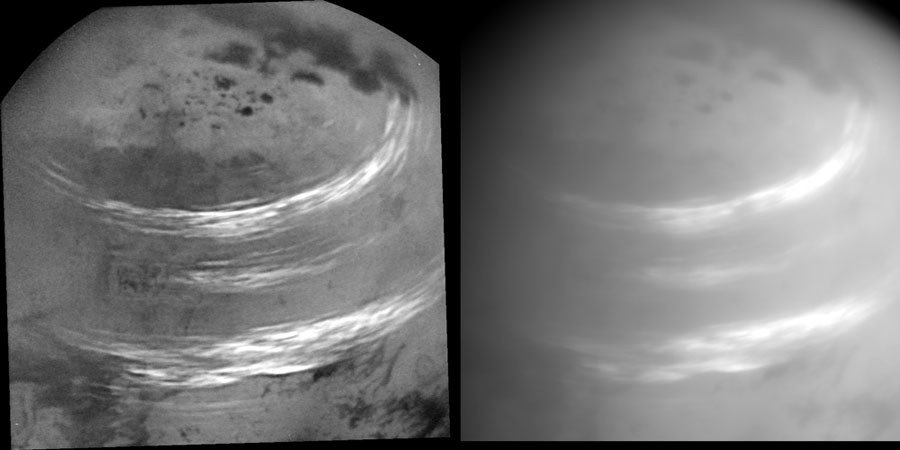‘Feathery’ alien clouds gather over Saturn’s moon Titan (PHOTOS)

NASA has released enhanced imagery of Saturn’s largest moon, showing methane gas clouds swirling over Titan’s lakes and seas.
As the US space agency’s 20-year mission to explore the secrets of Saturn nears its end, the Cassini spacecraft has been in its final orbit of the planet and Titan. One day on the moon lasts the equivalent of 16 Earth days.
The latest photos beamed back to Earth by Cassini provide a glimpse into the turbulent, gaseous environment on Titan.
#SaturnSaturday ICYMI: bright, feathery methane clouds drift above #Titan’s hydrocarbon lakes and seas. More: https://t.co/QHKwqYdqYlpic.twitter.com/UKmEXJ1WNo
— CassiniSaturn (@CassiniSaturn) May 13, 2017
Using two onboard cameras, Cassini, which can reach speeds of 78,000 miles per hour (125,000km/h), observed “bright, feathery methane clouds drift above Titan.”

Captured on May 7, the snap was taken from 316,000 miles (508,500km) above the moon’s surface. The dark regions in the images depict Titan’s hydrocarbon sea and smaller pockets of liquid methane.
READ MORE: Cassini captures Saturn 'movie' in first Grand Finale dive (VIDEO)
Titan has been described as a “giant factory of organic chemicals.” In 2008, Cassini scientists stated their belief that the gas giant holds “more liquid hydrocarbons than all the known oil and natural gas reserves on Earth,” hidden in the moon’s barren dunes and large lakes.
On September 15, 2017, Cassini will plunge into Saturn’s atmosphere, marking the end of its incredible 2.2 billion-mile (3.5bn-km) journey to the gas giant.












